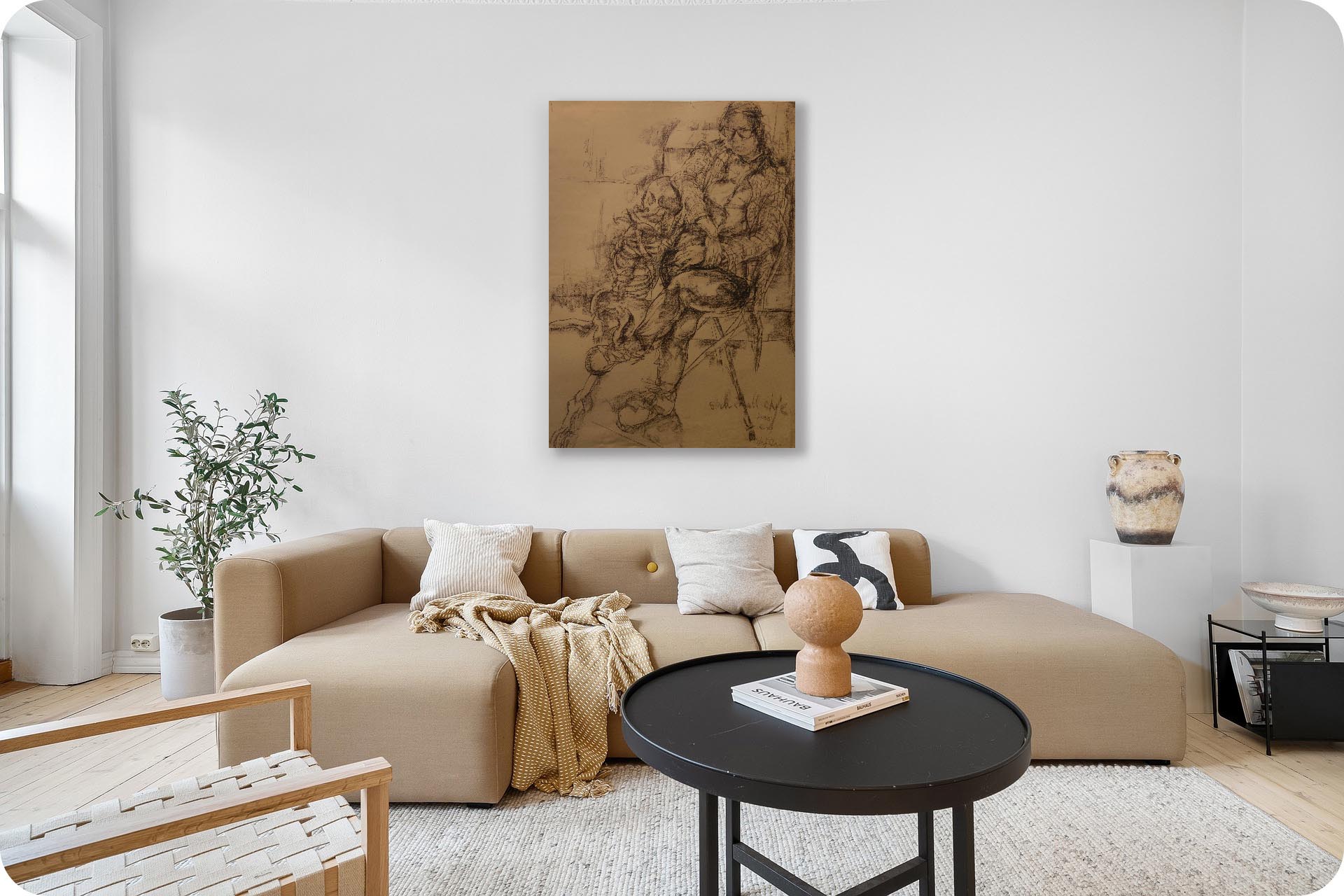This painting was created in 2017. This year I spent more time thinking about art in sketching courses, which also caused a disconnect between my color painting and sketching. I am more bold in looking for the core of Chinese culture in sketches, even though I still know very little about traditional Chinese culture. However, I am more conservative when it comes to color painting.
Overall Size: /
Size without the frame: /
Country: China
Date: 2017
Materials: /
Condition: well preserved
Creative themes and style | My works revolve around the creative concept of "The land of humanity, People on the land". The people in the painting are people in nature, and the lines, shapes, and colors are close to nature. The nature in the painting is nature in the eyes of humans, existing in interaction with humans.I don’t pursue a series of works with a fixed and continuous style. I hope that the style of the pictures will synchronize with the changes in my life and always remain oscillating. The performance of the work must be in sync with the development of one's own life in order to be Sincere and powerful. Ideas are later.
An Interview with Artist Philo by Artphiloso Gallery
If you would like to collect this artwork or know more about the artist, please contact us.

This is a typical method of combining teaching and creation. The skeleton serves as a tool for studying structure, while the live model trains observational skills. Placed side by side, they not only emphasize the importance of anatomical foundations but also create a symbolic dialogue between life and death.
The looseness is intentional, reflecting a sketch-like immediacy. Quick, unpolished strokes capture both the figure’s pose and the skeleton’s form, preserving traces of thought and gesture. This gives the drawing the feel of an authentic creative process, rather than a polished illustration.
Beyond technical training, this type of study reveals the artist’s way of seeing and thinking. For scholars and collectors of sketch-based art education, it serves as a direct example of structural study and rapid observation. It is particularly suited for teaching displays and studio exhibitions.
The figure reclines casually, with an almost indifferent gaze, while the skeleton maintains a rigid, emphatic posture. Their contrast produces a sense of dark humor, as if the living and the dead coexist in the same fleeting moment.
The blurred background draws focus to the interaction between the figure and the skeleton, while reinforcing a theatrical stage effect. Viewers experience the scene less as a literal environment and more as a performance frozen in time.
